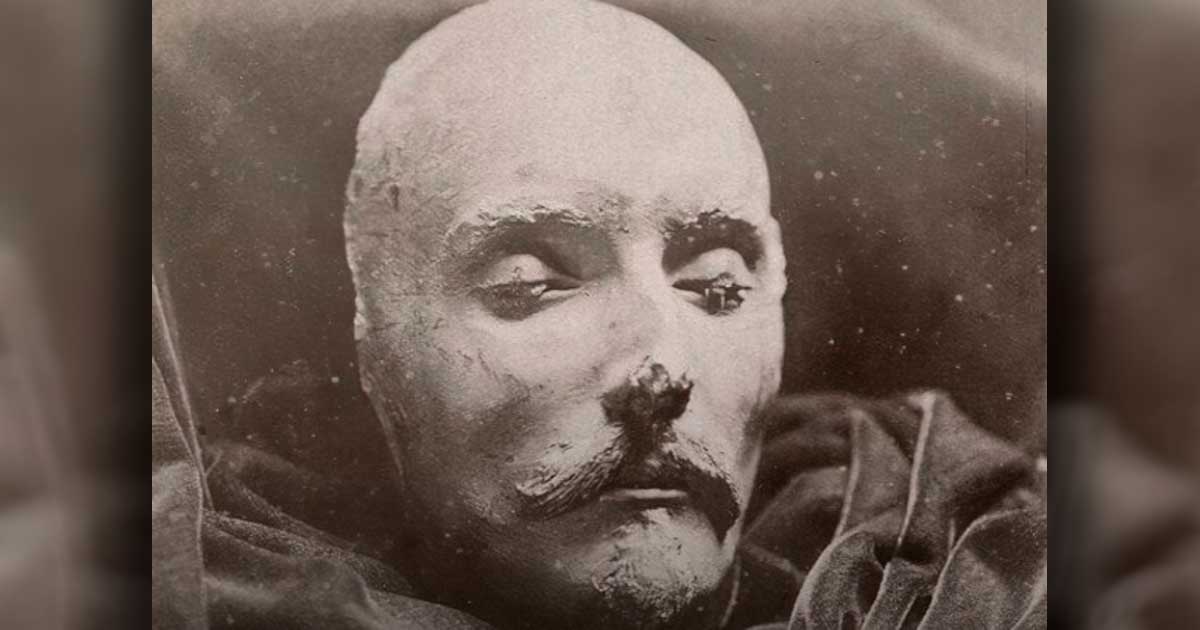History’s REAL Faces: 15 Death Masks of Famous and Infamous Figures
The closed eyes and uncannily peaceful expressions of death masks are frozen in time, and show us a side of royalty, of military and political masters, of profound thinkers and artists, and of the everyday public that are long past and largely unknowable.
Death masks – casts of a deceased person’s face taken to preserve their image – give us an impression of history that no written description, bust, or painting can provide. They offered a final viewing of the deceased and commemorated their legacies. Paradoxically, death masks serve to breathe life into the dead.
High profile and historic faces still continue to fascinate the public, as revealed during a recent auction at Bonhams. In 2013, the famous British auction house sold the death mask of French Emperor Napoleon Bonaparte for £170,000 ($260,000).

Death mask of Napoleon Bonaparte. One of only two plaster death masks of Napoleon Bonaparte remaining in private hands. The death mask was made by surgeon Francis Burton of Britain’s Sixty-Sixth Regiment of Foot on May 7th, 1821, two days after Napoleon’s death on St. Helena. (Trustees of The British Museum / CC by SA 4.0)

Wax copy of Oliver Cromwell’s death mask taken after the body had been embalmed. (Trustees of the British Museum / CC by SA 4.0). Oliver Cromwell (1599 – 1658 AD) was a notorious English commander and politician, who is regarded as one of the most important statesmen in English history. He remains a deeply controversial figure in both Britain and Ireland, due to his use of the military to first acquire, then retain political power, and the brutality and violence of his 1649 Irish campaign. Cromwell died on 3 September 1658, aged 59. His death was due to complications relating to a form of malaria, and kidney stone disease.
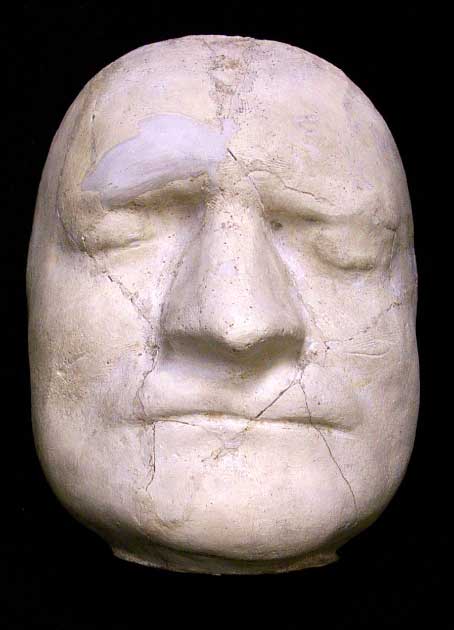
Death mask of Sir Isaac Newton, 1642-1727. Source: Laurence Hutton, ‘Portraits in Plaster, from the Collection of Laurence Hutton’ (New York, Harper & Brothers, 1894), and his ‘Talks in a Library’ (New York: G. P. Putnam's, 1905), recorded by Isabel Moore. Sir Isaac Newton was one of the most influential scientists in world history. He is best-known for his three laws of motion, and his law of universal gravitation. Additionally, he made contributions to the fields of optics and mathematics. Newton died in his sleep in London on 20 March 1727, aged 84.
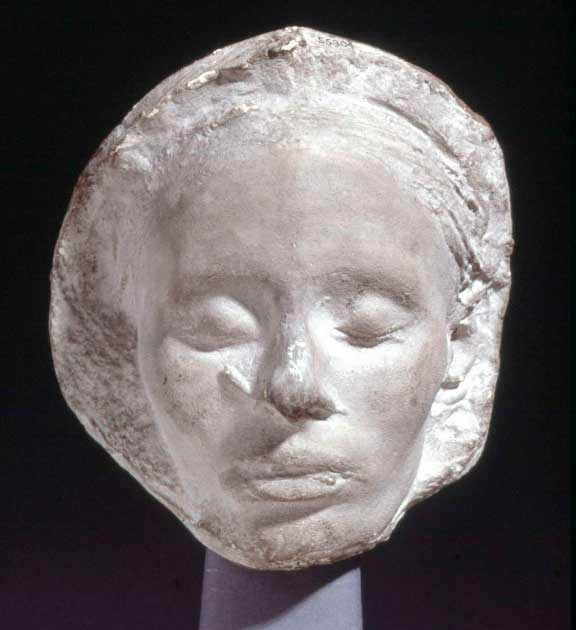
Plaster cast (modern) of a human face, taken from an ancient mold (c. 2300 BC) discovered at the pyramid-temple of Teti at Saqqara in Egypt. It is believed to be the face of King Teti, the first king of the Sixth Dynasty of Egypt, or one of his wives. (Trustees of The British Museum / CC by SA 4.0).
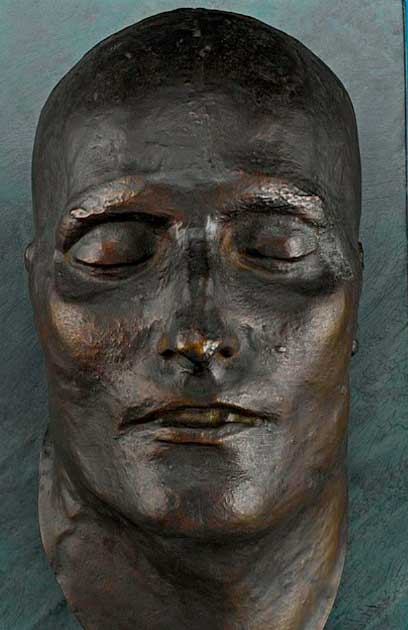
Bronze Death Mask of Napoleon I. Napoleon Bonaparte was one of the most famous and successful French statesmen and commanders of all time. He strode out of the French Revolution victorious, and became Napoleon I, Emperor of France. He ruled from 1804 until 1814 and again in 1815. He led daring expeditions that brought him close to the goal of conquering Europe. (Rauantiques / CC by SA 4.0)
- The eerie masks that preserve history and breathe life into the dead
- Unforgettable Death Mask: The Unknown Woman of the Seine
- 16 Bizarre, Impressive and Hilarious Funerary Masks of the Ancient World

Gold death mask from Bronze Age Mycenae, 1600 BC, known as the "Mask of Agamemnon". (Trustees of The British Museum / CC by SA 4.0). In Greek mythology, Agamemnon was a king of Mycenae who commanded the Greeks during the Trojan War.
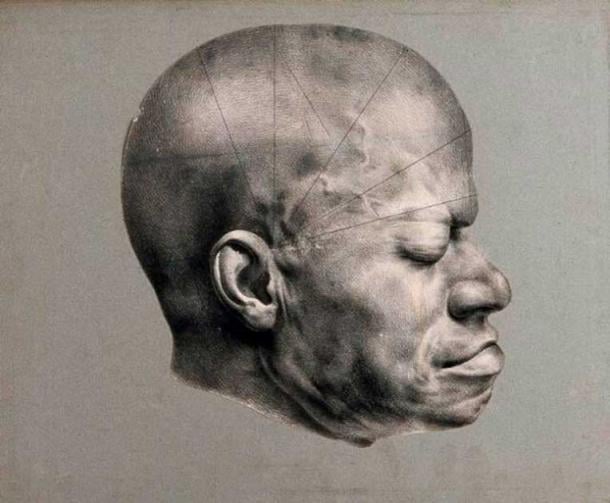
Death mask of Eustache, a slave from the Dominican Republic who came to be awarded a 'prize for virtue' in 1830's Paris. Lithograph, c. 1835. (Public Domain). Eustache’s death mask was used in the study of phrenology. The lines drawn across the head refer to the “bumps” through which an individual’s character and abilities are studied.
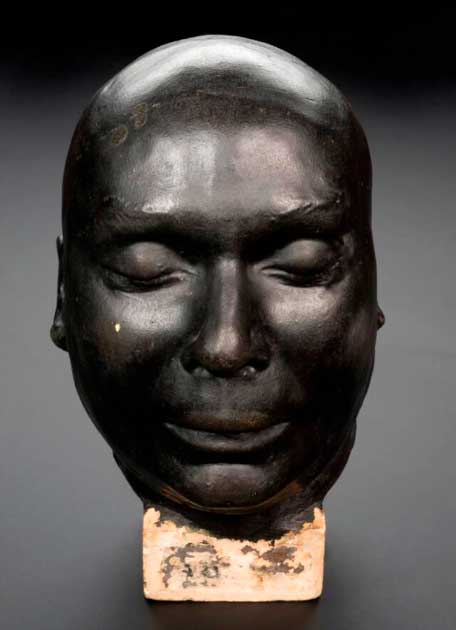
Painted plaster death mask of James Bloomfield Rush, England. (Science Museum, London/ CC by SA 4.0). James Bloomfield Rush (1800-1849) murdered Isaac Jermy (his landlord), and injured Mrs Jermy and the maid at Stanfield Hall, Norfolk, England, on 28 November 1848. Rush became known as the ‘Killer in the Fog’ and was hanged for his crime on 21 April 1849. His death mask was part of a set of phrenological heads known as ‘murderers’ row’ to learn whether murderous behavior could be identified by skull features. (Wellcome Collection / CC by SA 4.0).
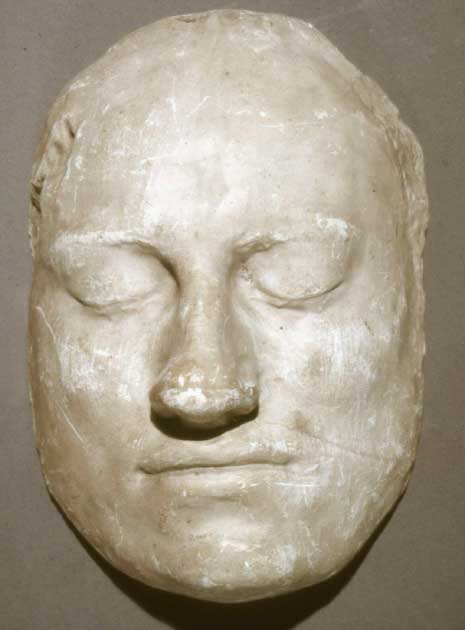
Death mask of King Charles XII of Sweden (Trustees of The British Museum / CC by SA 4.0). Charles XII (1682 – 1718 AD) was King of Sweden (including current Finland) from 1697 to 1718. He was idealized as a heroic, virtuous young warrior king. During his invasion of Norway in 1718, he was shot in the head and killed during the siege of the fortress of Fredriksten.

Death mask of Dante Alighieri (Larry Miller / Flickr). Born in Florence in the late 13th century, Dante Alighieri would grow up to become one of the most famed and well-read authors of the Italian Middle Ages. The scope of his political and philosophical intellect would serve him well in his best-known work, ‘The Divine Comedy’. Dante died in Ravenna on 14 September 1321, aged about 56, of quartan malaria.
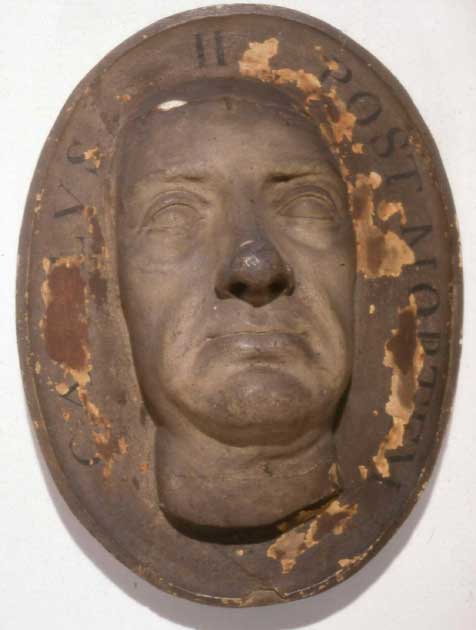
Death mask of King Charles II, 1685 AD. (Trustees of The British Museum / CC by SA 4.0). King Charles II was born in 1630, to the first Charles and his wife, Princess Henrietta. After his father’s execution, he was forced to live in exile between the ages of 19 and 30. The fates seemed to be smiling on young Charles in 1660, when the Stuart monarchy was restored following the death of Oliver Cromwell. He triumphantly returned to the land of his birth and was crowned King Charles II in 1661, a position he would hold for the next 24 years, until his sudden death from complications of an apoplectic fit in 1685.
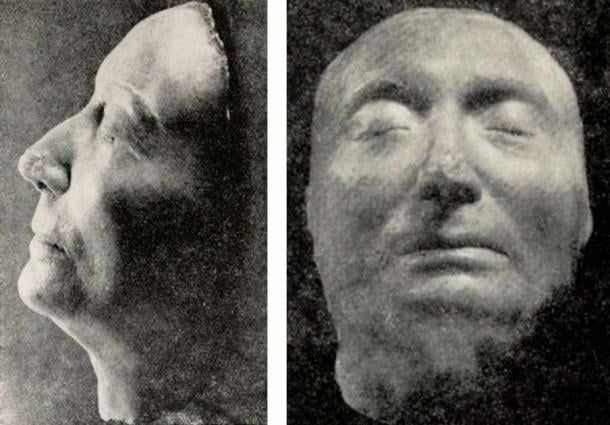
Death mask of Marie Louise Gonzaga, 1667 AD. (Public Domain). Marie Louise Gonzaga was Queen of Poland and Grand Duchess of Lithuania by marriage to two kings of Poland and grand dukes of Lithuania, brothers Władysław IV and John II Casimir. She is regarded as one of the most influential queen consorts of the Kingdom of Poland and the Polish–Lithuanian Commonwealth.
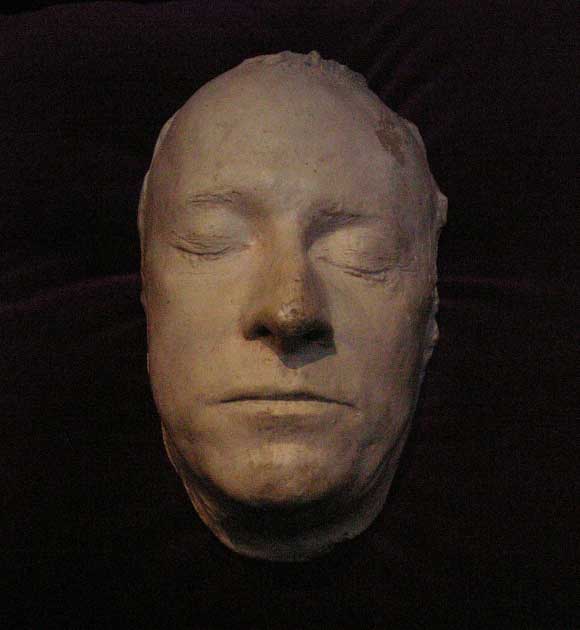
Gustav III, King of Sweden (Holger.Ellgaard / CC by SA 3.0). Gustav III (1746 – 1792 AD) was King of Sweden from 1771 until his assassination in 1792. He was a vocal opponent of the abuse of political privileges seized by the nobility since the death of King Charles XII. In 1792 he was mortally wounded by a gunshot in the lower back during a masquerade ball as part of an aristocratic-parliamentary coup attempt. He managed to quell the uprising before succumbing to sepsis 13 days later.
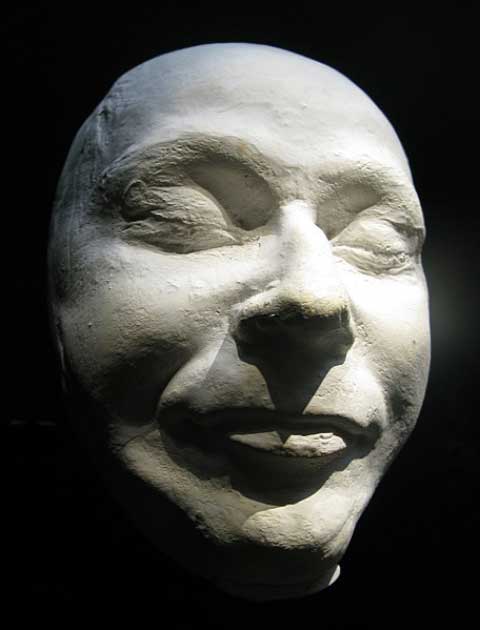
Death mask of Heinrich Himmler in the Imperial War Museum in London. (Public Domain). Heinrich Himmler was a SS Nazi Chief and one of the main architects of the Holocaust. He was one of the most powerful men in Nazi Germany and set up and controlled the Nazi concentration camps. Himmler was eventually captured by the Soviets and died by suicide after he bit down on a potassium cyanide pill.
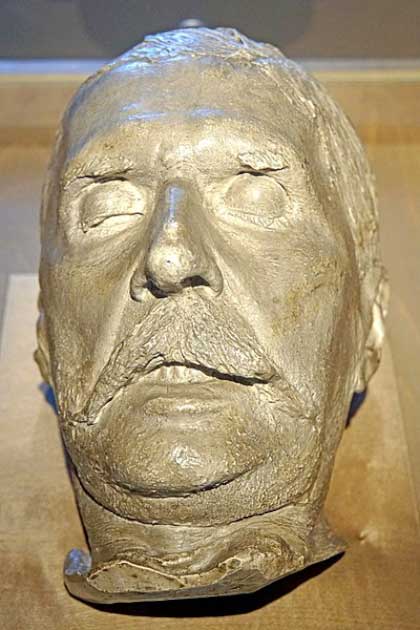
Death mask of Johann Strauss (Dennis Jarvis / CC by SA 2.0). Johann Strauss (1825 – 1899) was a famous Austrian composer who composed over 500 waltzes, polkas, quadrilles, and other types of dance music, as well as several operettas and a ballet. He was largely responsible for the popularity of the waltz in Vienna during the 19th century. He died of pneumonia, aged 73.
Top image: Death mask of William Shakespeare, 1616 AD (Public Domain). Shakespeare, an influential figure of Elizabethan England, is known for his plays and sonnets, and is considered to be the most famous writer of the English language. Shakespeare died on 23 April 1616, at the age of 52. He died within a month of signing his will, a document which he begins by describing himself as being in "perfect health". No extant contemporary source explains how or why he died.
By Joanna Gillan


















